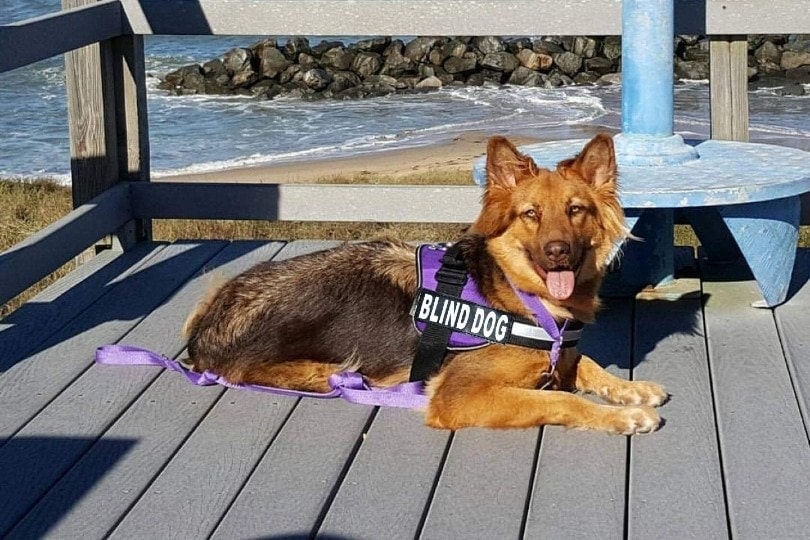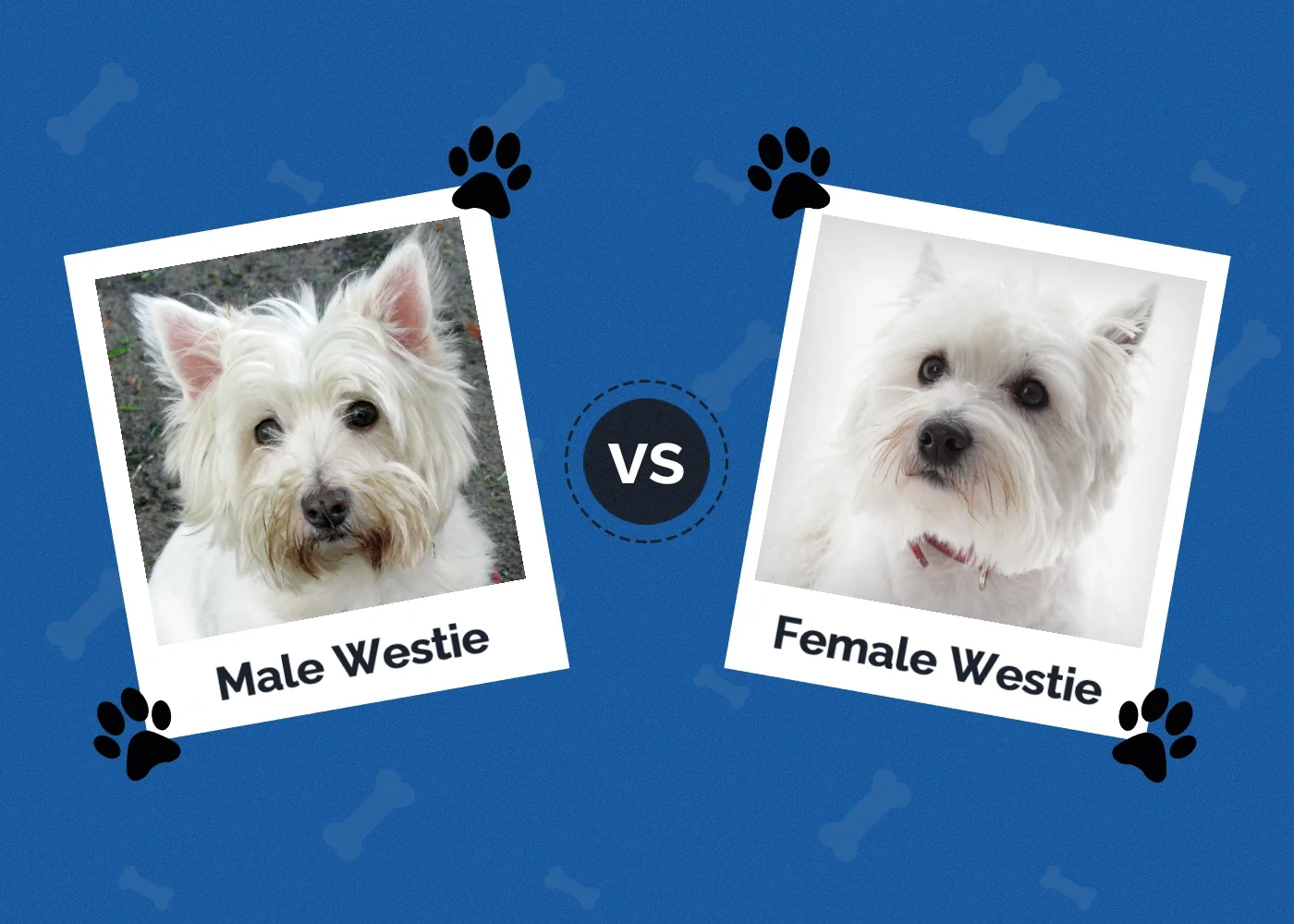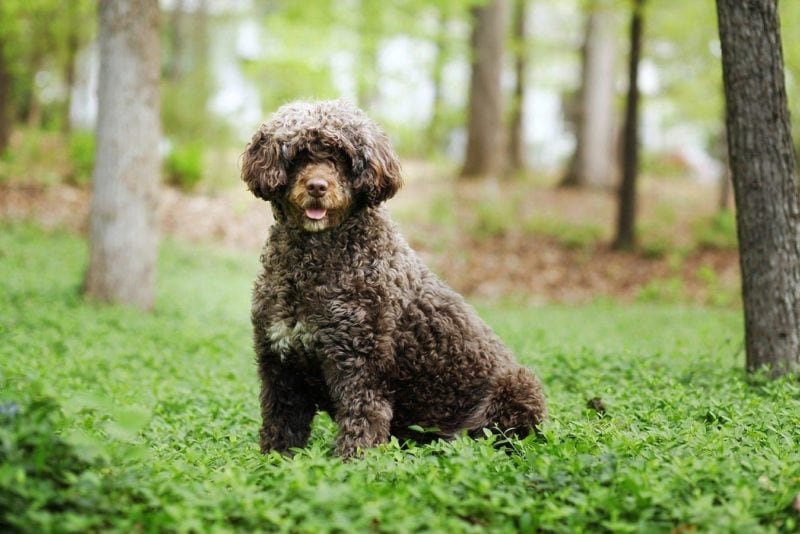How to Train a Blind Dog: 11 Vet Approved Tips & Tricks

Updated on
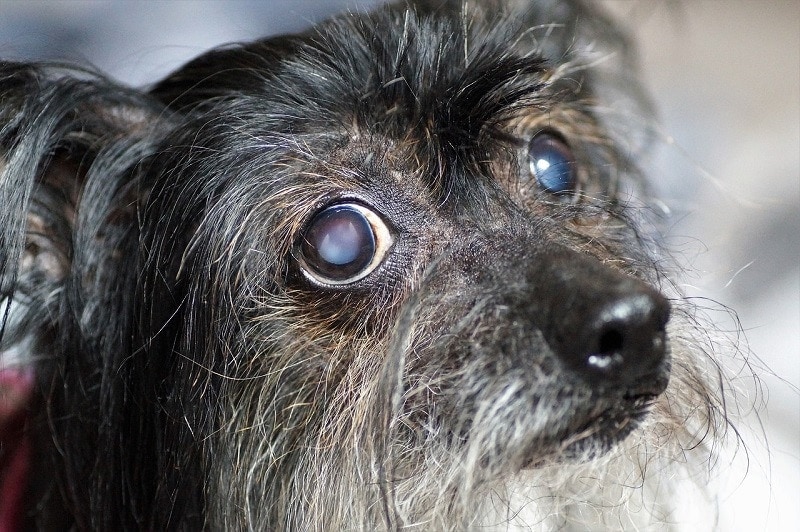
Click to Skip Ahead
If you are considering adopting a blind dog or have a dog that is losing their vision, it can feel overwhelming to figure out how to give them what they need. Dogs can lose their vision for any number of reasons, and some dogs are born blind. No matter what, though, they should still have happy and fulfilling lives.
Blind dogs navigate the world differently than sighted dogs, so training methods will have to be different too. Since blind dogs can’t rely on their sight to help them learn, we have to figure out other ways to get through to them. Read on for interesting and easy ways that you can set your blind dog up for success.
 Before You Begin
Before You Begin
Your home may need inspecting before you welcome a blind dog into it. If you already have a dog that is slowly losing their vision, now is a good time to make sure the house is properly set up for them.
Try to see your home as your dog would. By getting down to your dog’s level and exploring, you may find things that are dangerous to blind dogs. Sharp furniture edges, stairs, and obstructed paths can be difficult for your dog to navigate. Add bumper cushioning to sharp edges, and use baby gates to block off any stairs that your dog can access without your supervision.
Dogs can tell the difference between flooring textures. Rugs, linoleum, and hardwood may already be in your home, but consider adding a different texture to each room. Blind dogs will be able to tell what room they are in by the feel of the flooring beneath them. Floor mats at outside doors can help them locate the door.
If you have a dog that loves to follow you wherever you go, consider attaching a small bell to your shoes or clothing so they don’t have to wander the house searching for you.
Lastly, avoid rearranging the furniture if you can help it. Once your dog memorizes the layout of the house, changing it up on them could cause difficulties. Not only can they accidentally injure themselves, but they could also be scared to try to move around the home.
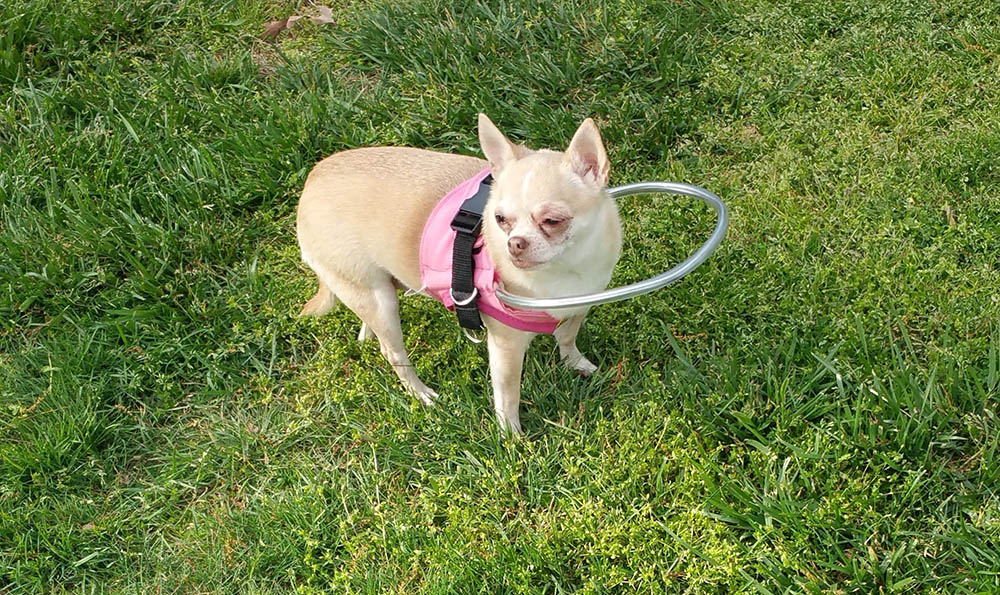
Clicker Training
Clicker training is a wonderful tool to use when training a blind dog. It can instantly get their attention and make them stop doing something that may be dangerous, like walking toward a staircase. Getting your dog used to a clicker will be helpful when you’re trying to teach them new things in the future. By clicking it, you can let your dog know that they are doing a good job or that you are about to give them another command, so they should pay attention.
If you don’t want to use a clicker, decide on a marker word. This is the word that you will say in place of the clicker. It should be something short and sweet, like “yes.” Keep this word consistent and easy for your dog to understand.
Both the clicker sound and the marker word are paired with receiving a treat. Start with high value treats, something your dog loves to eat. Keep training sessions short, just a few minutes at first.
How to Walk a Blind Dog
Usually, when you walk your dog, they will be on a leash, and you will be able to navigate their path for them. However, things like curbs, stairs, and obstacles blocking paths will require you to be able to let your dog know what’s coming up. Teaching them what to do when these things appear will make your walks much easier and more enjoyable.
1. Watch
When dog owners use the “watch” command with sighted dogs, it’s a cue to make the dog look at them. With blind dogs, it’s a cue for the dog to move toward their owner to get out of the way of an obstacle.
- When your dog is leashed, say “watch.” Gently pull the leash toward you. When your dog moves near you, let them know that they performed the desired command with a click or your marker word, and instantly reward them with a treat.
- Repeat this process a few times until your dog seems to do this easily.
- Say “watch” without pulling on the leash. If your dog comes near you on their own, reward them with a mark and reward. If they don’t move toward you, repeat the first and second steps until your dog is able to understand the command without you pulling the leash.
2. Step
The command “step up” and “step down” can be used to alert your dog to a curb or stair in their path. Other suitable words are “Hup” for a step up and “Step” for a step down.
- With your dog on a leash, when a stair or curb is within 2 feet of your dog, start walking slowly. As your dog’s front foot reaches the edge of the step so they can feel it say “step up.” Move forward up the step or lure them with a treat if needed, and when your dog steps up, mark (‘Yes’ or click) and reward them. Repeat this process until your dog seems to get the hang of it.
- Repeat the process for “step down”. Repetition and quick rewarding are the key factors in getting your dog to understand these commands. Remember to move slightly ahead of your dog so you are starting to go up or down the step to guide them.
3. More Options
Other very useful commands are:
“Wait” to announce your intention to stop walking
“Left” and “Right” for a needed change in direction
“Walk on” to announce your intention to start walking
“Who’s this?” to announce that some-one is coming to greet them

Other Helpful Tips and Tricks
1. Make sure your dog has an area of the house that can be designated as their safe zone
A comfortable, warm, quiet spot with a soft bed will help them feel confident and secure while they rest. It will also give them a cozy retreat whenever they are feeling overwhelmed. A crate or kennel are perfect for this.
2. Talk to your dog as often as possible
Your voice will be what your blind dog must depend on to help them through life. Make sure they hear it often, as it’s reassuring and comforting to them.
3. Keep your daily routines as consistent as you can
There will be times when things don’t go as planned and you’ll have to change things up, but consistency is important to all dogs. If they are blind, it’s even more important.
4. Avoid others startling your dog by informing them that your dog is blind
Let your dog smell them first as they approach slowly. Once your dog feels comfortable, people can proceed with petting them.
5. Keep your dog’s food, water and bed in the same location
Once they get used to this, changing it up can confuse and frustrate them.
6. Try a fountain water dish
Since water doesn’t have much of a scent, it may be hard for your dog to locate it. If the water source always makes noise, your dog will be able to find it easily.
7. Leave a television or radio on when you’re not home
Ambient noise can be comforting to blind dogs alone in the house. Also, let them know when you are going out by using a consistent routine and phrase. Such as placing them in their crate with a boredom buster and saying “heading out”.
8. Invest in toys that make noise
Toys that make sounds when your dog plays with them will be especially fun for blind dogs. If you throw one for them, they’ll be able to retrieve it by hearing where it lands.
9. Don’t change the layout of your house
If you do have to change something, give your dog plenty of time to get used to it. It may take a long time for them to feel comfortable with the changes.
10. Keep your dog’s path around the home tidy
This can be hard, especially with kids in the house who leave toys and other belongings scattered about. But these things can be dangerous to your dog. They can trip over them, causing injuries. Try to keep the pathways of the house as clean as possible.
11. Try a halo
This is a lightweight device worn to assist blind dogs in their environments. It helps them learn layouts faster and keeps them safe. Instead of the dog bumping into objects and walls, the halo will bump into them first and alert the dog to their presence. It gives the dog time to redirect themselves without getting hurt.
 Conclusion
Conclusion
Just because a dog is blind or visually impaired does not mean they can’t live a full and rewarding life. Extra care just might have to go into helping them get comfortable with the world around them. By following these tips and tricks, you can give your dog a safe and loving home. We hope that you’ve enjoyed these suggestions and learned new ways to help your pup.
Related Reads:
- How to Discipline a Puppy – 7 Humane & Easy Methods
- How Much DNA Do Dogs Share with Humans? What You Need To Know!
- Featured Image Credit: ivabalk, Pixabay

 Before You Begin
Before You Begin
